AI SMS Campaign
- Flow 1 – Preparation
- Flow 2 – Execution
- Entity Relationship Diagram
- Table Description
- Data Sources
- Data Destinations
- How to Use Template
- Component Description
- Authorizing Data Sources
- Authorizing Application
- Authorizing Data Destination
Revamp your marketing strategy with our template, seamlessly utilizing Shopify data to create personalized campaigns. Our AI crafts customized SMS messages sent via Twilio, effectively engaging your customers and elevating your marketing with AI precision.
The template consists of two flows, where the first flow can be considered a data preparation phase, while the second serves as the execution phase.
Flow 1 – Preparation

- First you set up a component to extract data from your Shopify account. You only need to provide your Shopify login credentials; the component will handle the extraction of all necessary data.
- The transformation is pre-defined and will create a dataset containing customer contact information and recommended products for each customer.
- The AI app utilizes the data created by the transformation mentioned above to generate customized SMS messages.
- The transformation then creates two new tables from an existing table, with column renaming and the addition of an ‘approved’ column in the second table, which is initialized with a value of
'false'for all rows. - Data is sent to the data app, where users can review and approve the generated messages for campaign execution.
Flow 2 – Execution

Once you have selected the messages for sending and clicked the Upload to Keboola button in the data app, flow 2 is triggered automatically to send the data to Twilio.
Entity Relationship Diagram
An entity-relationship diagram is a specialized graphic that illustrates the relationships between entities in a data destination.
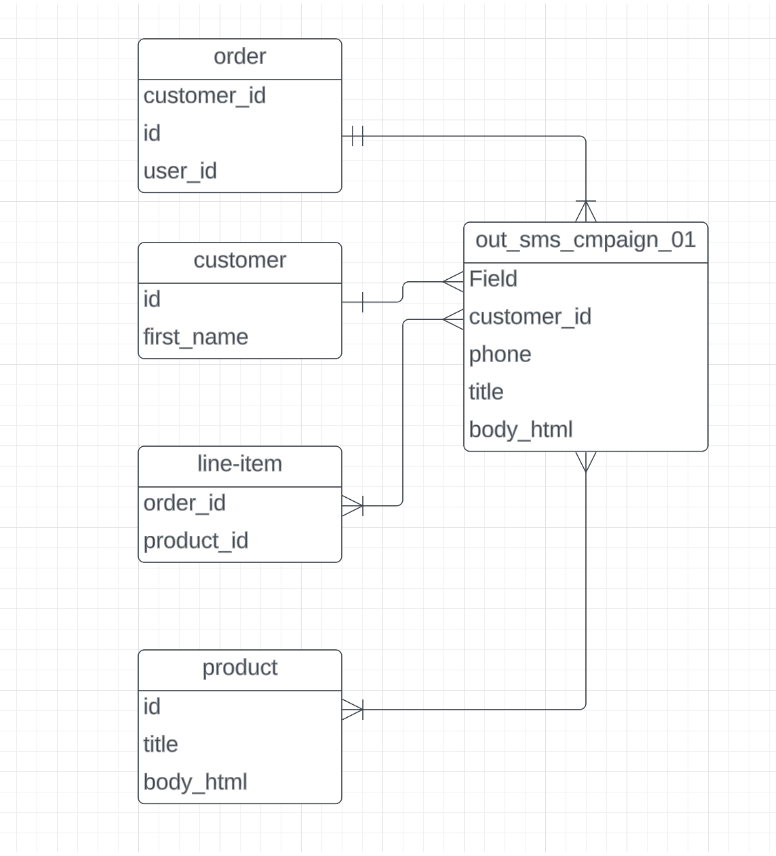
Table Description
| Name | Description |
|---|---|
| ORDER | contains data about fulfilled customer orders, including order details, etc. |
| CUSTOMER | contains contact details of individual customers, their marketing preferences, total spent, etc. |
| LINE-ITEM | contains data about individual items in stock, including prices, stock availability, etc. |
| PRODUCT | contains data about individual products offered, including description, product images, etc. |
Data Sources
The following data sources are available:
Data Destinations
The following data destinations are available:
How to Use Template
The process is simple. We will guide you through it, and, when needed, ask you to provide your credentials and authorize the data destination connector.
First decide which data source and which data destination you want to use. Then select the corresponding template from the Templates tab in your Keboola project. When you are done, click + Use Template.
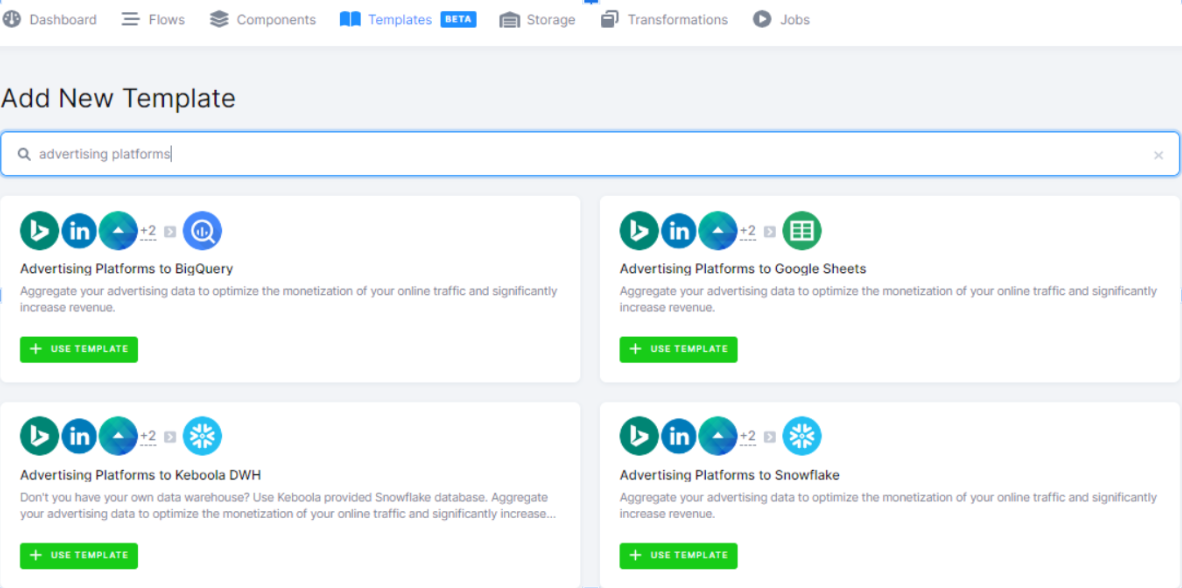
This page contains information about the template. Click + Use Template again.
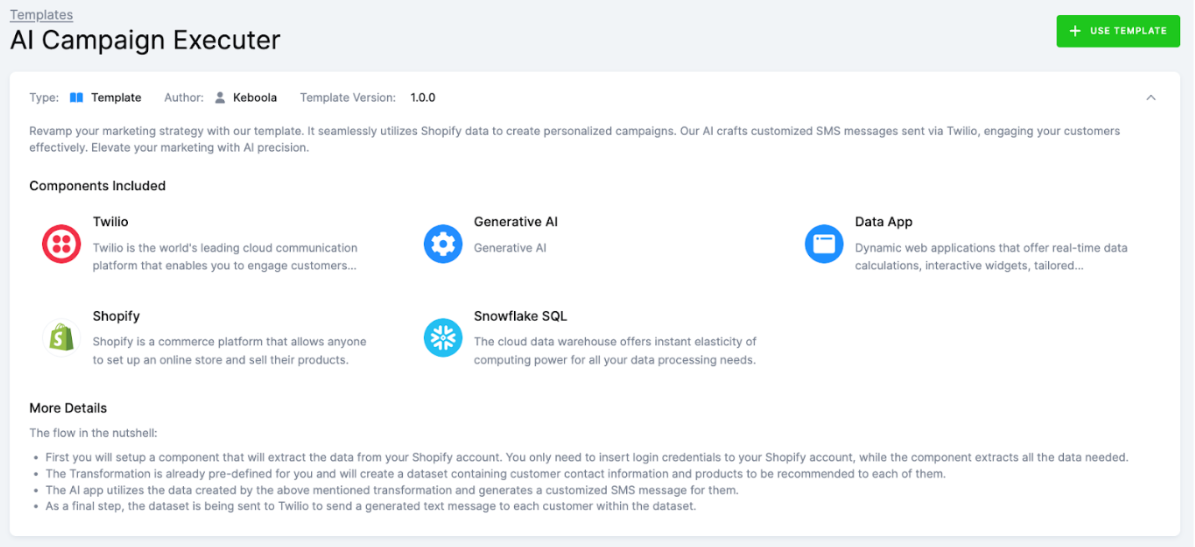
You’ll be asked to write a name for the template instance you are about to create. You can use the template as many times as you want and still keep everything organized.
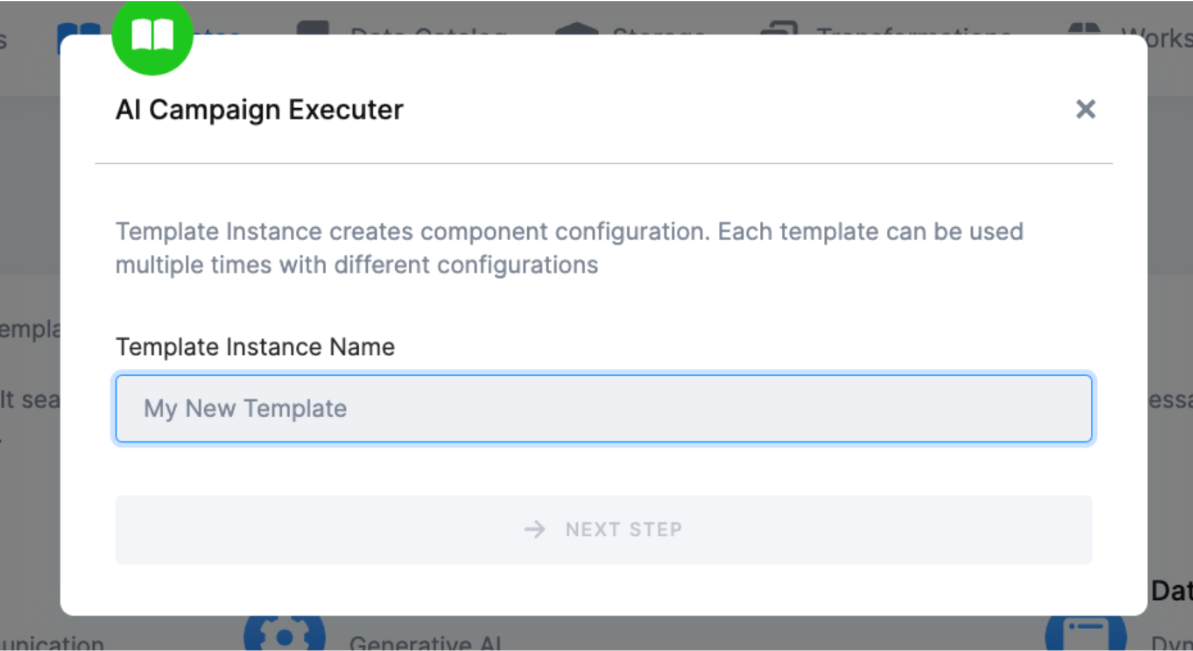
Component Description
Shopify Data Source Connector
The component is set up to extract all the data tables:
customer, inventory-items, inventory-levels, line-item, locations, order, product, product-images, product-options, and product-variant.
SQL Transformation
The transformation is configured to create a table with following columns:
customer_idname(equals to the first name of the customer)phone(equals to a phone number of the customer)count(equals to the number of products purchased)title(equals to the name of the product)body_html(equals to the description of the product).
The data will be prepared for the next step of the process – personalized AI-generated messages to the customers on specific products.
Generative AI Personalize SMS Campaign
Once authenticated to your AI provider, the component utilizes AI to generate a short and informal email campaign
tailored for users of the online store. It dynamically incorporates the user’s name (Customer_Name) and recommends a selection of products (Product_1,
Product_2, Product_3, Product_4, and Product_5), all while adding emoticons to create a personalized and engaging message for each recipient.
Twilio Campaign Maker
The component connects to the Twilio service and sends data from storage, where personalized text messages were generated by AI and added to the contact information of the customers.
The component utilizes AI to generate a short and informal email campaign tailored for users of the Kopr online store. It dynamically incorporates
the user’s name (Customer_Name) and recommends a selection of products (Product_1, Product_2, Product_3, Product_4, and Product_5), all while adding
emoticons to create a personalized and engaging message for each recipient.
To authorize the component, you will need to input an Account SID, Authentication Token, Messaging Service SID, and specify whether you wish to generate a log after sending the messages (true/false).
Authorizing Data Sources
To use the selected data source connector, you must authorize it first.
Shopify
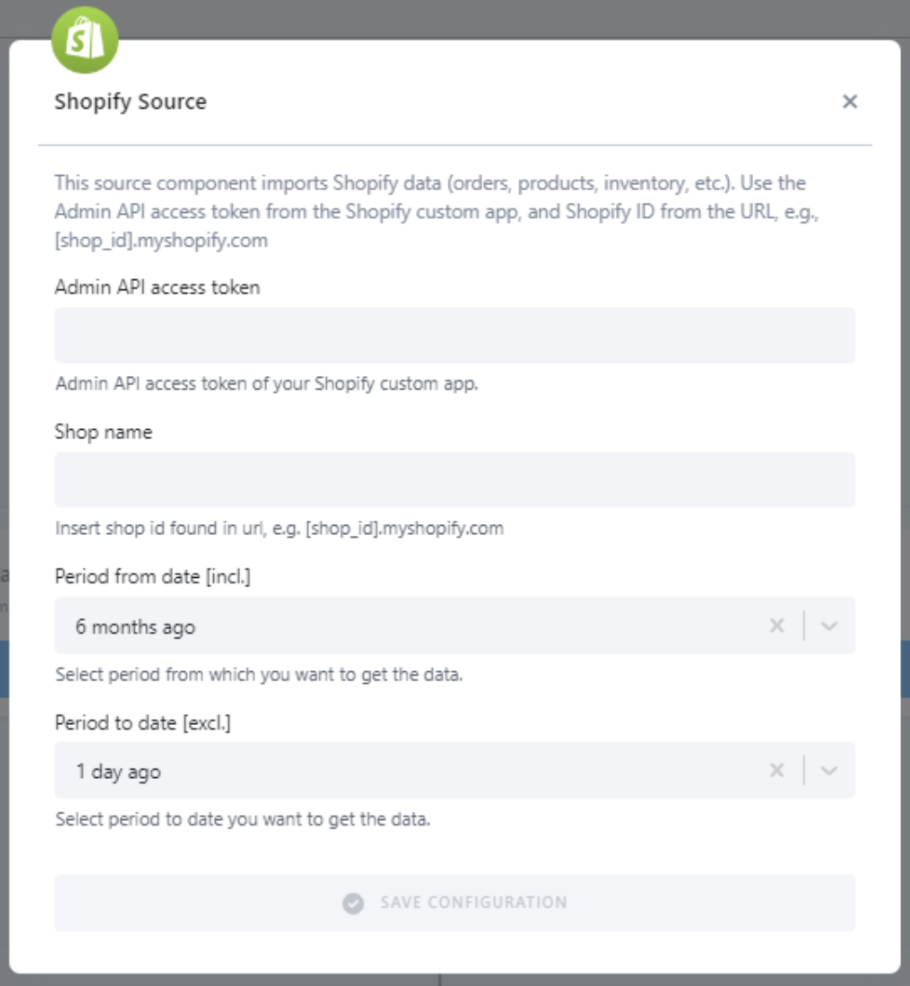
To enable this application, you must:
- Enable private app development for your store.
- Create a private application.
- Enable Read access ADMIN API PERMISSIONS for the following objects:
- Orders
- Products
- Inventory
- Customers
Additional documentation is available here.
Authorizing Application
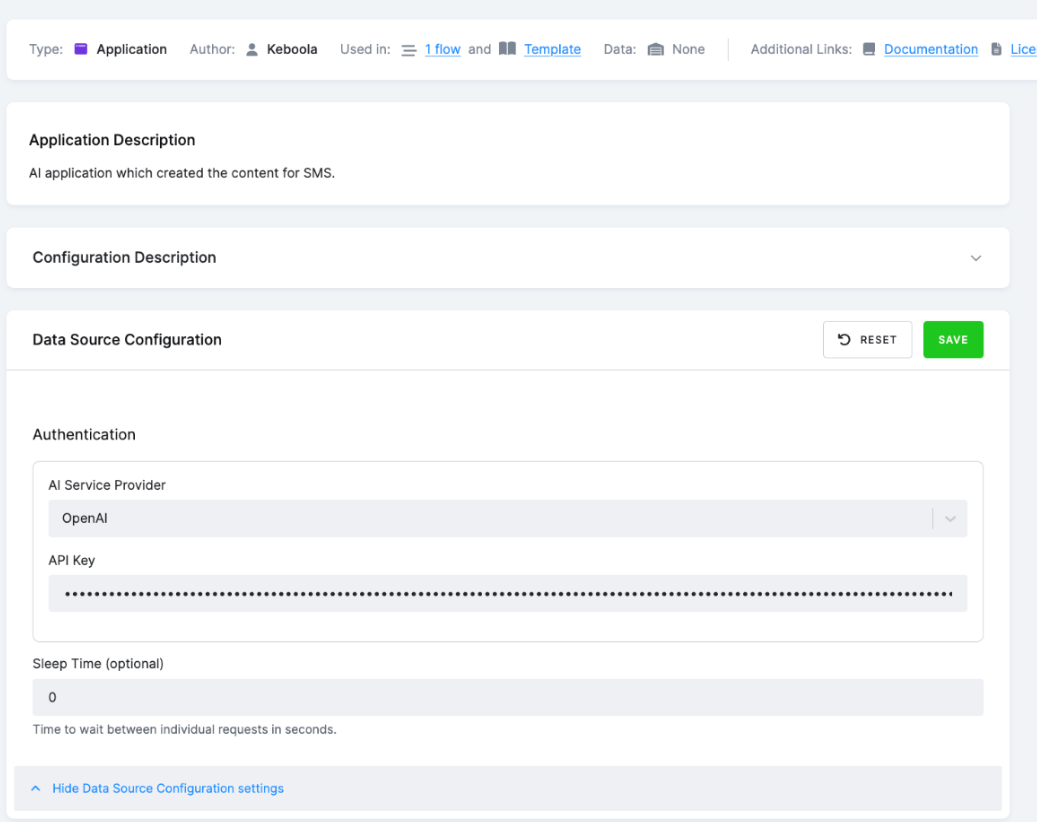
Choose your AI service provider and enter your API key.
Authorizing Data Destination
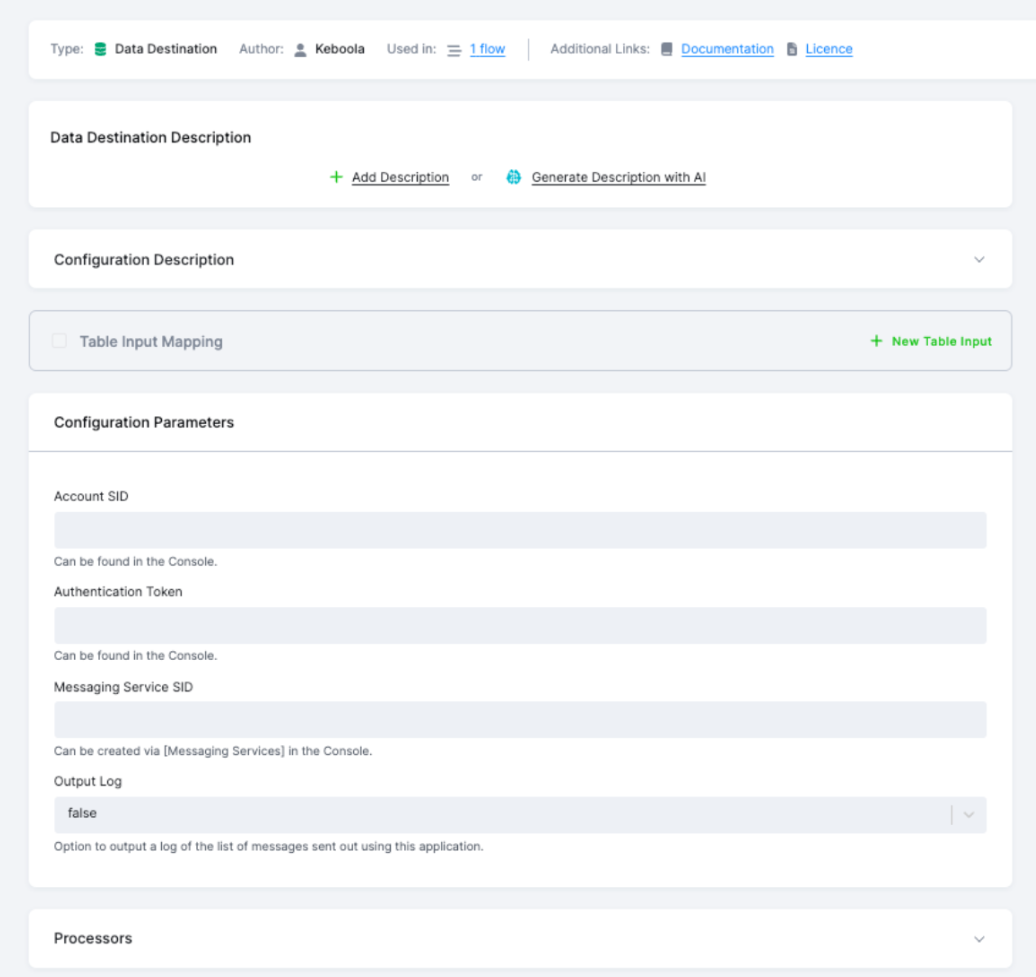
The component is required to have at least one table in the input table mapping. If more than one table is configured in the input table mapping, the component will loop through all of the input tables and process all the rows, sending out the configured messages to the assigned numbers.
Input Mapping Requirements
All tables are required to have the following columns:
- phone_number
- message
Configuration Parameters
| Name | Description |
|---|---|
| Account SID | can be found in the console |
| Authentication Token | can be found in the console |
| Messaging Service SID | can be created via Messaging Service in the console; the purpose of this service is to define the service identity |
| Output Log | users have the option to output a log of the list of messages and targets sent out using this application |
